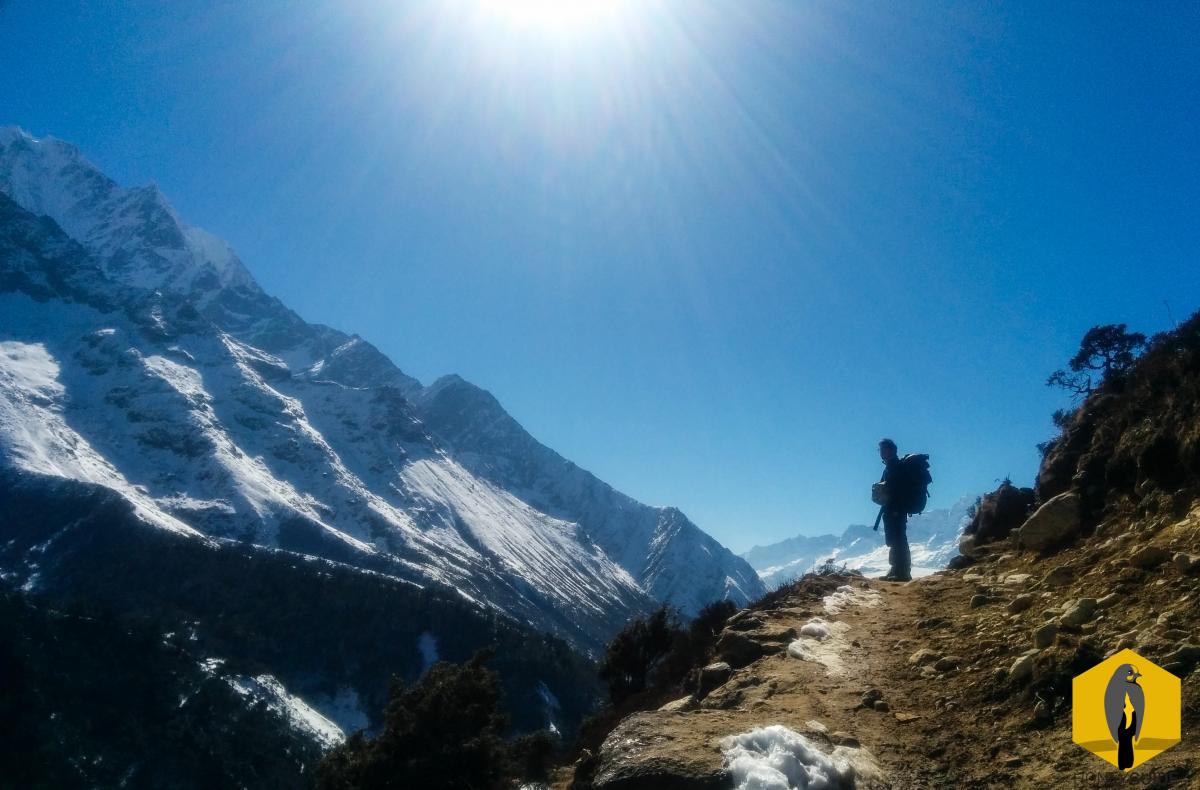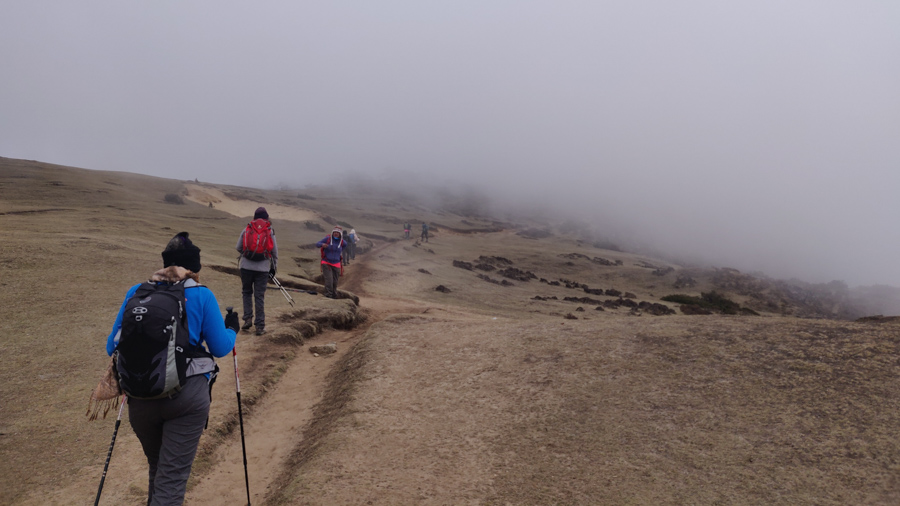The word ‘Independent’ sounds fun by itself and backpacking in a small country like Nepal with lot to explore goes way beyond than just having fun. As such, trekking independently is a great way to breathe in the culture of this land at your own pace. While it isn’t everybody’s cup of tea, for those that do not mind a little uncertainty and some discomfort, trekking solo can be an enjoyable and immersive experience.
Trekking independently in Nepal will give you enough freedom to choose your own pace, your own destination and your own choice of eateries and lodges. However, as we said, unguided or independent trekking is not for everyone. Here we list the ugly, the bad and the good sides of trekking independently.
The Ugly……
1. Health and Safety:
One of the biggest pitfalls of trekking independently is safety issues. God forbid it, but if you need to be evacuated, helicopter companies will not send in a chopper unless they have a cash guarantee. Usually, the trekking company will take care of this. Hence, if you are trekking independently, you will have to provide the cash guarantee through a credit card or through your kin via your embassy. Lodge owners, HRA Aid Post or local law enforcement bodies will be able to help you for communication purposes.
You will have to be especially careful if you are trekking independently and solo. You might not have anyone to help you out in case you sustain an injury or fall sick. This will be especially important if you are trekking off-season. As such we strongly suggest, insist even, that even if you come to Nepal alone, find like-minded trekking partner who is going on the same trek as you are. If you are a solo woman trekker and if you’re not comfortable trekking with other men then you can certainly look at these two sites; Trekbooking and Trekkingpartner to find women trekking partners. Finding trekking partners will not only make your journey safe, but will also enrich it in so many different ways.
We have done our best to make your trip as safe as possible in our mobile guidebook apps. Some of the key features we have are:
– Deviation Alerts if you stray off the route by 200m.
– Climb Alerts if you climb more than 500m in a day after 3,000m.
– Contact information for Embassies and Consulates.
– Comprehensive Rescue Contacts.
Also Read: Health And Safety While Trekking in Nepal
The Bad……
1. Finding Accommodation:
In high season, you may not get the room to stay if you are alone or in a small group. Lodges prefer large groups that come from established companies. However, there is the couple of ways to get around this. Along the trail, there are places which are generally used by large groups of night stops. However, along most of the popular routes, there will be accommodation available within an hour’s distance of the preferred night stops. Comprehensive list of lodges and walking times in our guidebook app will come in very handy for independent trekkers like you. We also have reviews and phone numbers of the lodges to help you out. Another way to get around this problem is to pack together. Find like minded trekking partners along the trail and travel as a group of say 7-8. That way, the lodge owners will be more likely to give you guys a room. Worse comes to worse, you might have to spend the night in the dining hall. Believe us when we say this, it isn’t as bad as it sounds. They are usually warmer than the rooms and you might even like the hostel like ambiance of it. Be prepared for smelly socks though!!!
2. Not contributing to the local economy:
While trekking independently, you are making limited contribution to the local economy of that area. That is not to say that large groups contribute to the local economy. Only a small portion of the money that is spent by large organized groups makes it outside of Kathmandu. However, if you have a local guide or porter, you would be helping bring much needed income to the villages. And given the fact that around 20 percent of Nepal’s population works abroad mostly in the Middle East, every avenue of employment is a plus both for the villagers and for Nepal as a whole.
3. Invest your time on logistics:
If you are trekking independently, you will have to shop for gear, get permits, get flight tickets and arrange insurance all by yourself. And if you are hiring porters or guides, you will also have to take care of their insurance and well-being yourself.
Bottom line is, you will have to take charge of everything in a new place. And while it will be too much of a hassle for many, for those that have the time and energy, it can be a great learning experience.
The amount of time that you will have to spend on logistics is also the reason why you should stick to the well-trodden routes. Organizing a trek in one of the remote locations like Dolpo or Kanchenjunga requires a huge logistical commitment that is easily beyond the limits of an average independent trekker.
4. Lack of information:
To be familiar with a place where you have just landed will certainly take time. You may not have required the information about native language, routes, communication systems and etiquettes. If you have a guide by your side you would get this information and all you have to do is listen and follow.
However, going through travel blogs before you get here and approaching the trek with an open mind will go a long way. Listen to people carefully, ask if you aren’t sure and read the signs that are posted. While it will take time, figuring out the culture and customs of the land by yourself certainly makes for an authentic cultural experience.
We also have detailed information on routes, services and etiquettes in our guidebook to help you in this front.
The Good…
1. Be the boss of your itinerary:
You get to decide everything on your own. Sail your boat wherever you want. Suppose, you had planned on leaving for Annapurna Base Camp trek the next day after landing in Kathmandu, but want to explore the alleys and temples of Kathmandu some more. You will get to do as you please and explore to your heart’s content.
Also it might happen that you want to take a short trip to a side valley during your trek, or spend an extra day in a place that you find irresistibly beautiful. Scenarios like these come up much more often than you can imagine right now, and if you are trekking independently, you needn’t have second thoughts about it.
2. Travel cheaply:
One of the biggest advantages of trekking independently is that you get the best bang for your buck. The money that you save can be spent on buying small luxuries along the trail. Pamper yourself to a luxury lodge along the trail for one day, order a full course meal with delicious desserts every other day or simply spend an extra night in a place that you love.
3. Choose your own lodges:
While trekking through an agency, the company chooses the lodges for you. In this arrangement, lodges get regular business and companies get a good rate. However, it does happen often that you meet people along the trail and want to crash in the same lodge. Trekking independently will not only give you this freedom, but will also allow you to choose lodges that have good reviews in our guidebook.
4. Meet more people, have more Experiences:
Being part of a large organized group almost always results in a bubble. There is very limited communication outside the group. Travelling independently will be the exact opposite. You mingle much more often with fellow trekkers and have more conversations with the locals. The more experiences you share, the wiser you will become.
5. Learn Nepali:
While most lodge owners understand basic English, picking up a word or two in Nepali whilst visiting Nepal will go a long way in breaking the ice. As you will be talking to locals more frequently while trekking independently, you will learn that much more. Namaste and Tashi Delek is the usual greeting in the Himalayas similar to Hello. Other basic words are Tapai (honorary you), Malai (me), Hami (we), Dhanyabad (Thank you) and Malai Nepal Manparcha (I Love Nepal).
6. Homestay:
Homestay is getting increasingly popular in Nepal and as an independent trekker you will have the freedom to forgo the comforts of a lodge for the authentic cultural experience of living in a real Nepali home. We will let you know of places which have homestays.









